10 Best Alternatives to Microsoft Outlook in 2024

Microsoft Outlook is a popular email app compatible with Windows, Mac, iPhone, and Android. It is known for its comprehensive features catering to individual and business needs—it integrates email, calendars, basic task tracking, and more into a single platform.
Despite its widespread adoption and deep integration into the corporate world, many users are exploring alternatives. This shift is driven by various factors, including the desire for more intuitive interfaces, better customization options, and solutions that cater more closely to modern workflow demands.
This blog will examine the top ten best alternatives to Microsoft Outlook in 2024. In 2020, approximately 306 billion e-mails were sent and received every day worldwide, so the demand for a better email app has never been greater.
Whether you’re looking for enhanced features, more efficient email management, or better integration with video conferencing tools, there are countless options – even if you’re still using Outlook or Office 365 for your email.
Why Choose an Alternative to Microsoft Outlook?
“Email has an ability many channels don’t: creating valuable, personal touches—at scale.” – David Newman
In the world of email clients and productivity tools, many users are pivoting towards alternatives to Microsoft Outlook in 2024. Despite Outlook’s stronghold in the market, several reasons compel users to explore other options. Let’s delve into the common motivations behind this shift:
1. Ease of Use
One of the foremost reasons users look beyond Microsoft Outlook is the quest for a more user-friendly interface that’s streamlined. As digital workspace becomes increasingly integrated into our daily lives, the demand for intuitive and easy-to-navigate software has never been higher. Alternatives that offer streamlined, cleaner interfaces and simpler navigation appeal to users seeking to enhance their productivity without a steep learning curve. Tools like Spike for Teams that look like WhatsApp or iMessage bring an approach to creating a chat-like interface for email.
2. Flexibility and Customization
Customization options allow users to tailor their email experience to their needs, a feature Outlook often sees as needing improvement. It’s a legacy email client, and users are looking for a new interface. As users’ needs change, Outlook doesn’t meet them. Users are very comfortable with WhatsApp and iMessage, so a tool like Outlook feels like an interface from another era.
3. Performance and Reliability
Bugs, crashes, and slow performance are significant deterrents for software users. For large inboxes, Outlook’s users have reported issues ranging from synchronization errors to unexpected crashes. Alternatives that promise faster, more reliable performance with fewer bugs present a compelling reason for users to make the switch, especially those who rely heavily on email for daily operations.
4. Complete Digital Workspace
Although Outlook includes an email, calendar, and basic task tracker, many users want more from a digital workspace. The best Microsoft Outlook alternatives in 2024 also offer video meetings, collaboration, and team chat inside a single digital workspace.
5. Modern Mobile Experience
In our increasingly mobile-first world, the demand for a seamless, fully functional mobile email experience is higher than ever. Users often find Outlook’s mobile app needing more features or challenging to use, leading them to seek alternatives that provide a more robust, user-friendly mobile email management experience. As of 2021, 61.9% of all email opens occurred on mobile devices, highlighting the shift towards mobile as the primary platform for checking email, so a first-class mobile experience is critical.
The search for alternatives to Microsoft Outlook is driven by a combination of these factors, reflecting users’ desire for email clients that are secure, reliable, intuitive, customizable, and integrated with their digital ecosystem. As we continue to explore the best alternatives to Microsoft Outlook, it’s clear that the future of email management lies in innovation, user-centric design, and the ability to get all of their work and communication done in a single interface.
The 10 Best Alternatives to Microsoft Outlook in 2024
In searching for the best alternatives to Microsoft Outlook, users have many options that cater to different needs – from enhanced security and intuitive interfaces to superior integration capabilities. Here, we look into the top alternatives, starting with Spike for Teams, which stands out for its unique conversational approach to email and team chat.
1. Spike
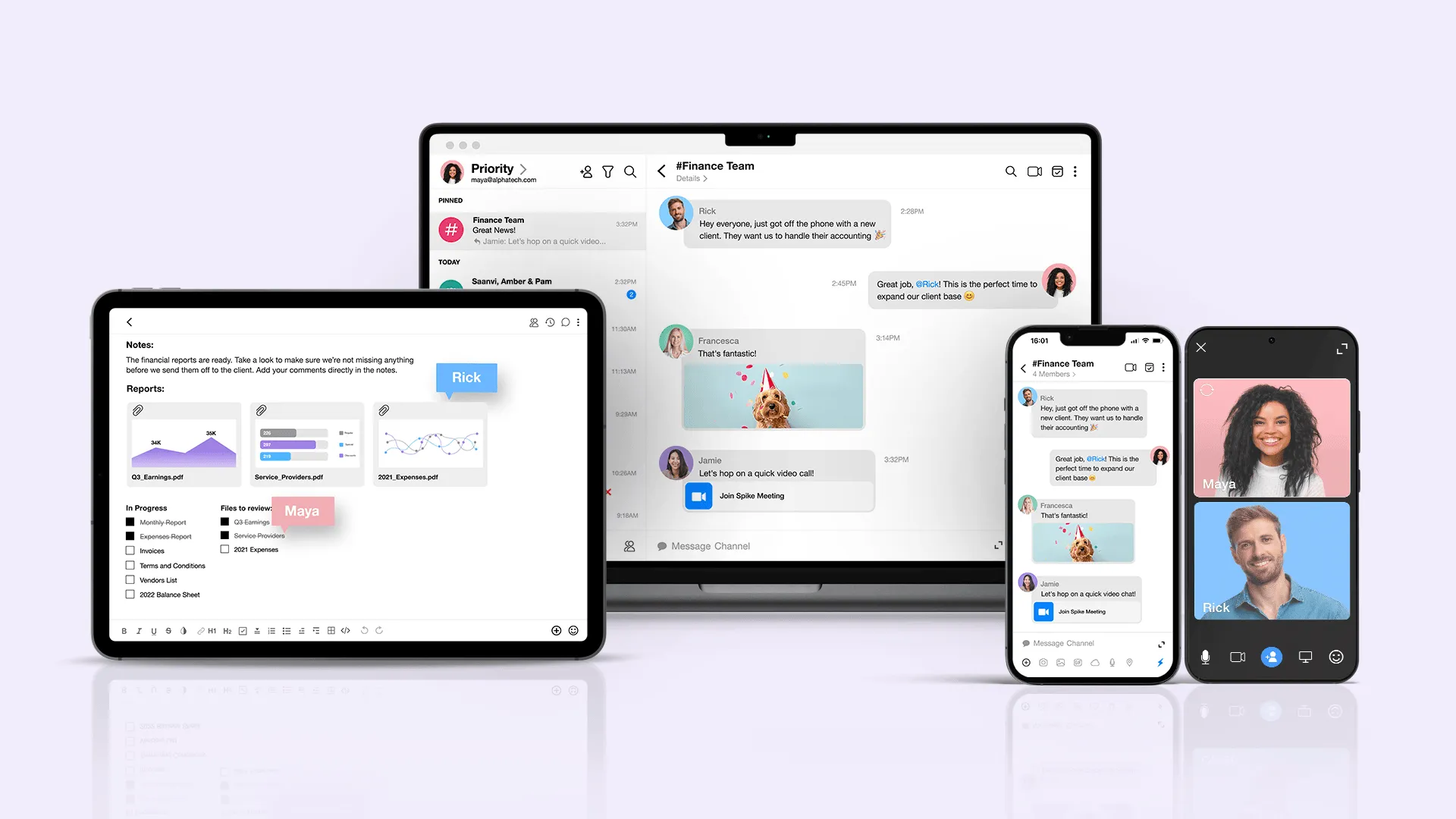
Spike for Teams revolutionizes email communication by transforming it into a conversational experience similar to messaging apps like iMessage and WhatsApp. Many users have said it’s the closest thing to iMessage for PC that’s available. It’s designed to streamline team collaboration through integrated task and document management alongside video conferencing features. Spike offers a unified workspace by combining emails, chats, calls, and collaboration tools into a single platform. It is an excellent choice for teams looking for an all-in-one communication solution.
Key Features:
- Conversational Email: Transforms traditional emails into chat-like conversations
- Integrated Task & Document Management: Seamlessly manage tasks and documents without leaving your inbox
- Video Conferencing: Built-in video calls to facilitate easy team meetings
- Priority Inbox: Takes your inbox from chaos to calm by focusing your attention on important emails
- Magic AI: Uses Generative AI to transform how you compose emails, translate emails, and summarize long threads
- Email Domain: Use your domain name for business emails
- Works on: PC, Mac, Android, iPhone
Pricing: Spike offers a free personal plan with premium plans starting from $4 per user/month, providing options for businesses of all sizes. Check out the pricing page for more information.
2. Gmail
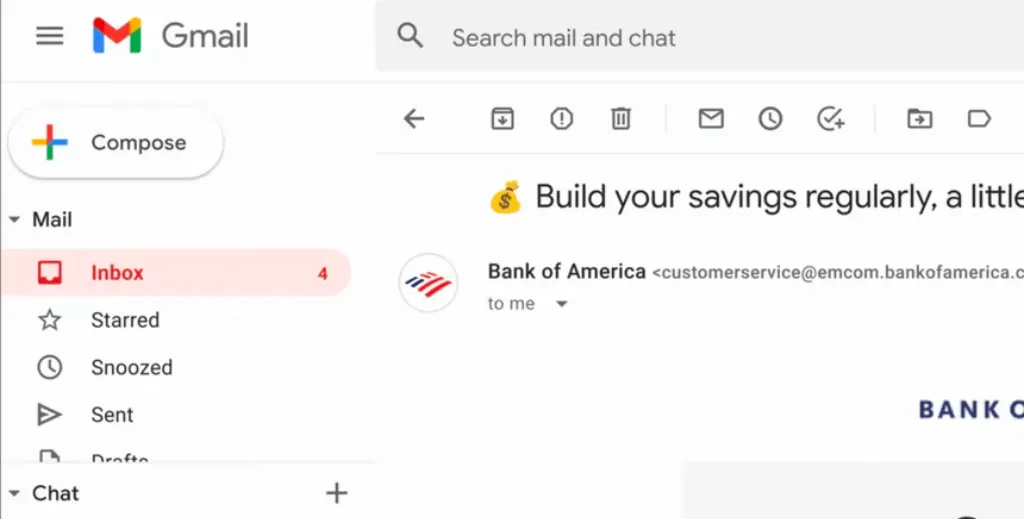
Google’s Gmail web interface is a powerhouse in email. It’s known for its robust performance, extensive integrations with the Google ecosystem, and powerful spam filtering. It’s highly customizable and offers a significant amount of storage space. It’s useless unless you’re using Gmail or Google Workspace. It can’t combine all of your email accounts into a single interface.
Key Features:
- 15GB of free storage for personal uses
- Seamless integration with Google Workspace tools
- Strong spam filtering
- Works on: Web and Mobile devices
Pricing: Free for personal use, with Google Workspace plans starting at $6 per user/month for additional features and storage.
3. Mailbird
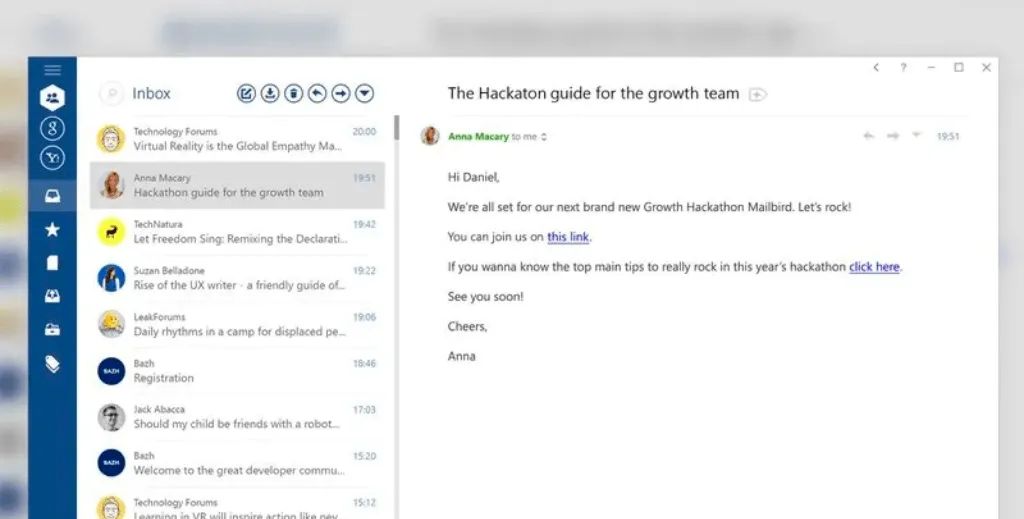
Mailbird is a Windows-based email client that stands out for its customization options and integrations with apps like WhatsApp, Twitter, Dropbox, and more, providing a unified communication hub.
Key Features:
- Unified Inbox to manage multiple accounts
- Customization options and app integrations
- Speed reader for quick email scanning
- Works on: Windows
Pricing: Paid plans start at $99.99 per user, with a free plan available.
4. eM Client
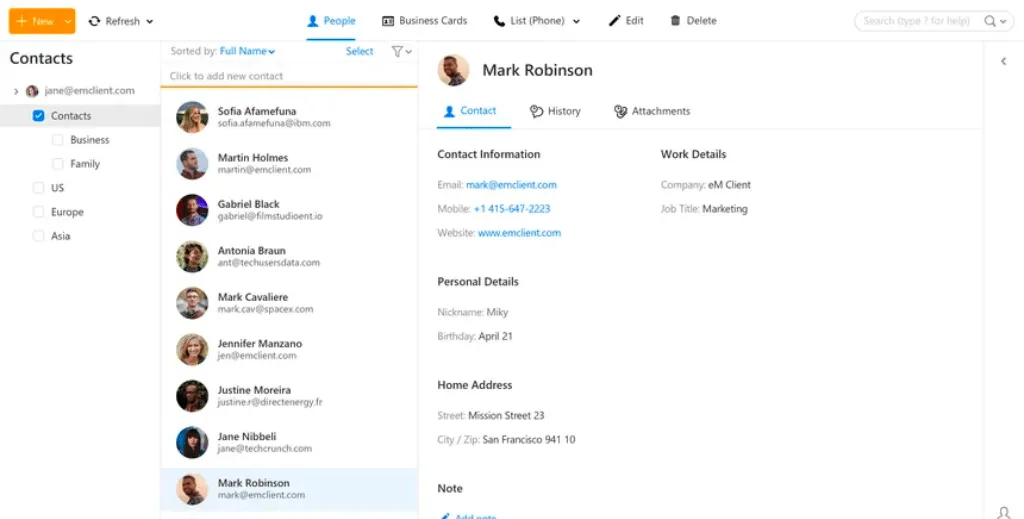
eM Client is known for its clean interface and comprehensive features, including email, calendars, tasks, and contacts. It supports all major email services and offers unique features like incoming and outgoing email translation.
Key Features:
- Support for all major email services
- Built-in email translation
- Advanced contact management
- Works on: Mac and Windows
Pricing: A free version is available; the Pro version starts at $59.95 for a lifetime license.
5. Thunderbird
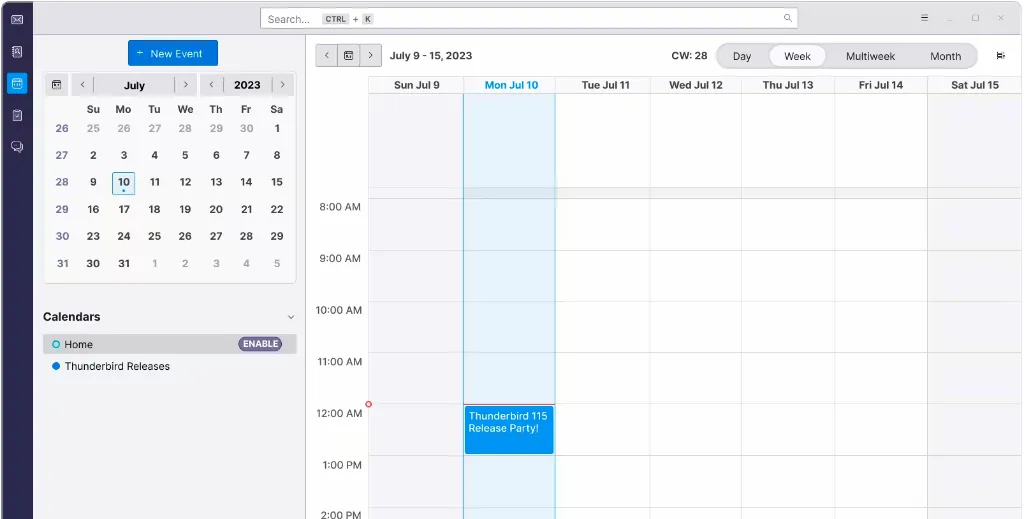
Thunderbird is a free, open-source email client from Mozilla (makers of Firefox) that offers extensive customization through add-ons and features robust security protocols.
Key Features:
- Open-source with robust customization options
- Strong security and privacy tools
- Integrated calendar
Pricing: Free
6. Zoho Mail
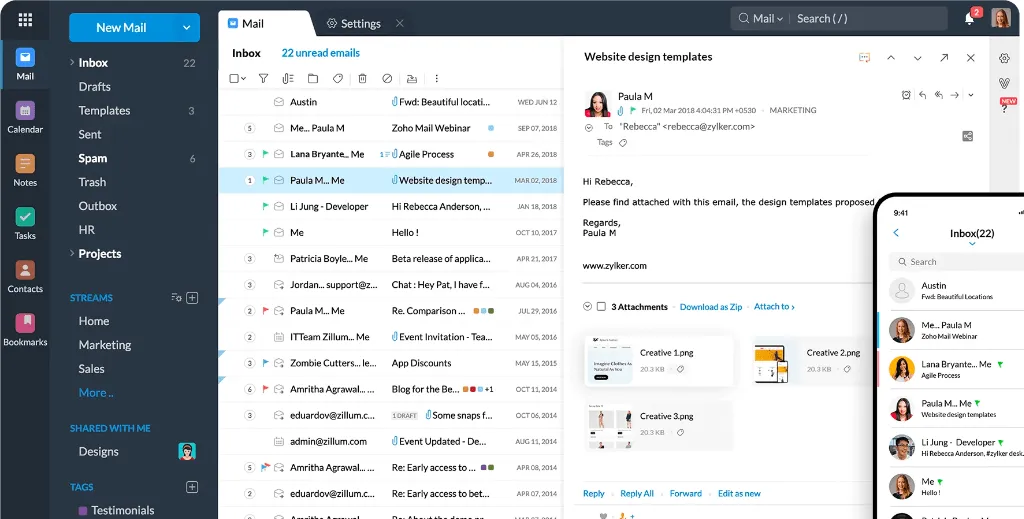
Zoho Mail is part of the Zoho suite and offers a secure, ad-free business email experience. It’s designed with teams in mind and features extensive collaboration tools.
Key Features:
- Ad-free business email
- Integrated with Zoho’s suite of apps
- Advanced collaboration tools
Pricing: Free for up to 5 users; premium plans start at $4 per user/month.
7. ProtonMail
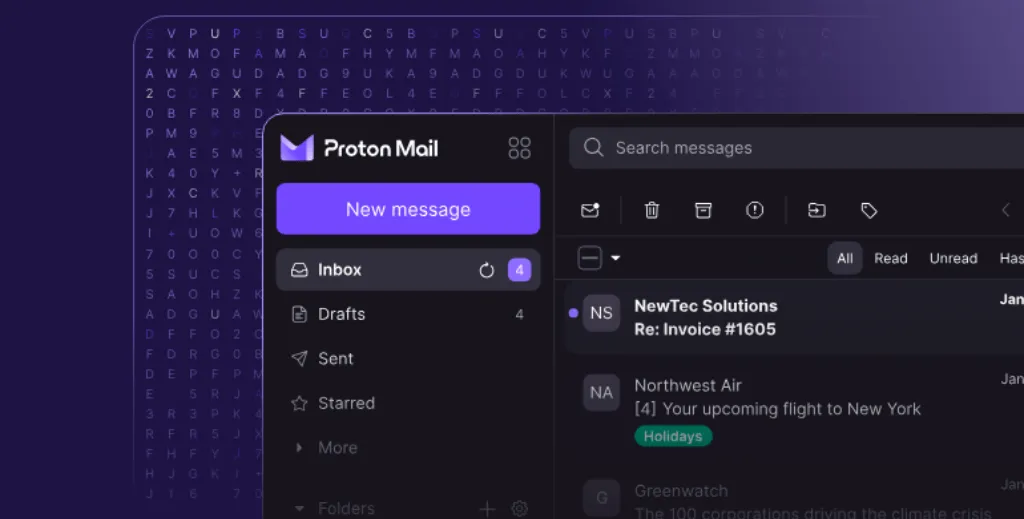
ProtonMail emphasizes security with end-to-end encryption, making it one of the best choices for users prioritizing privacy.
Key Features:
- End-to-end encryption
- Open-source and independently audited
- Works on: Mac, PC, iPhone, Android
Pricing: Free, with premium plans starting at $4 per month.
8. Tutanota
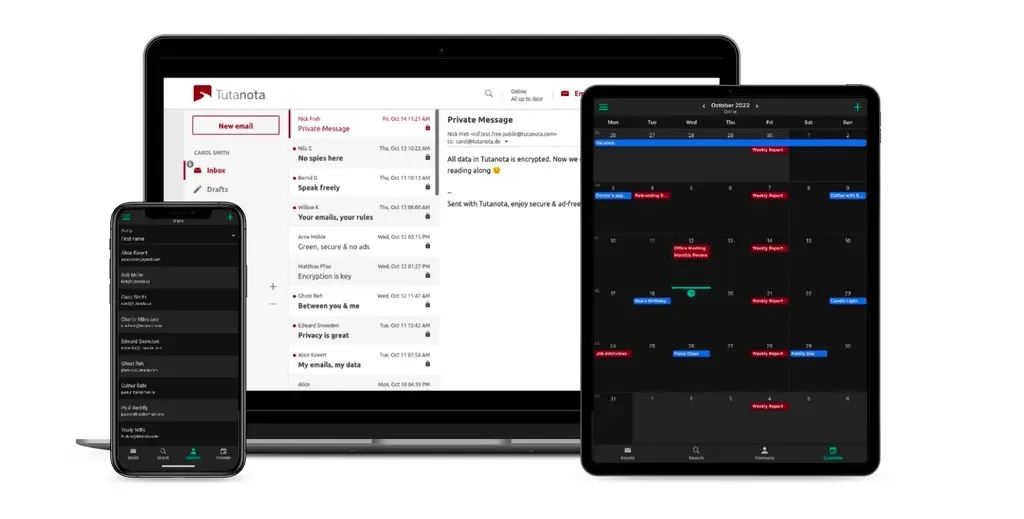
Tutanota offers a secure email service with end-to-end encryption. It’s designed with privacy in mind, making it a great choice for users looking for a security-focused alternative.
Key Features:
- End-to-end encryption for emails and contacts
- Fully open-source
- Built-in encrypted calendar
Pricing: Free for basic use; premium plans start at $3 per month.
9. Hey
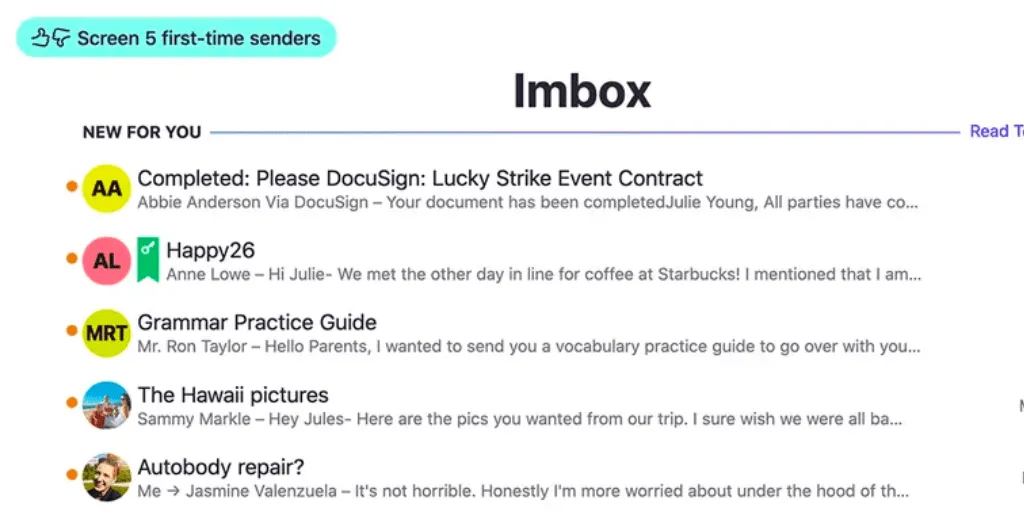
Hey is a newer entry in the email market, offering innovative features like ‘The Screener’ to control who can send you emails. It’s designed for users looking for a fresh approach to email management.
Key Features:
- Innovative email screening and management features
- Blocks tracking pixels
- Clean, user-friendly interface
Pricing: Starts at $99 per year for @hey addresses, and email domain is $12/user per month.
10. Spark
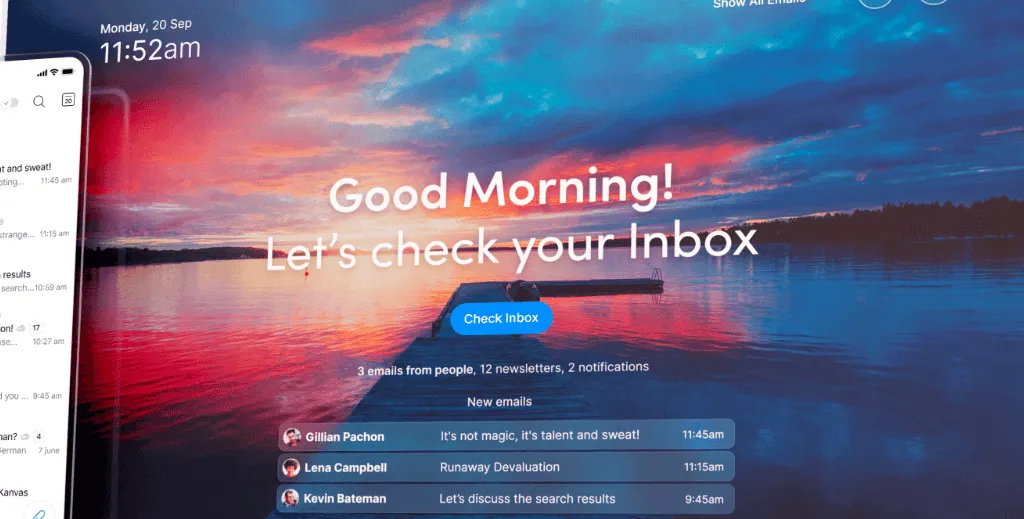
Spark by Readdle is another innovative email client focusing on intelligent email prioritization, offering a cleaner, more organized inbox. It’s equipped with powerful collaboration tools like shared inboxes and email delegation, perfect for team environments. Spark’s modern design and functionality aim to improve productivity and email management across devices.
Key Features:
- Smart Inbox: Automatically categorizes emails for a clutter-free inbox
- Email Collaboration: Enables teams to collaborate on emails with shared inboxes and delegated tasks
- Email Scheduling and Snoozing: Plan when emails are sent and manage inbox clutter
Pricing: Spark is free for individual users, with Pro starting at $59.99/year.
Wrap-Up on the Top Outlook Alternatives for 2024
With the aim for improved productivity and seamless communication, the options of email clients have evolved significantly, presenting many alternatives to Microsoft Outlook in 2024. These alternatives we listed address common frustrations associated with Outlook, such as ease of use and flexibility, and introduce innovative features like Spike’s Priority Inbox that cater to the modern workforce’s needs. Among these apps, solutions that combine email and team chat into a single interface stand out, offering a streamlined, unified platform for collaboration and communication.
The highlighted Outlook alternatives, especially Spike for Teams, show a growing trend towards integrative solutions that blend traditional email functionalities with the immediacy and convenience of team chat.
While Microsoft Outlook has been a staple in email communication for years, the evolving demands of today’s emails require more streamlined, integrated, and user-friendly alternatives. Whether you prioritize new features, user experience, or seamless integration with other productivity tools, an Outlook alternative meets your needs. Spike for Teams is leading the charge for those seeking an all-in-one communication platform.




